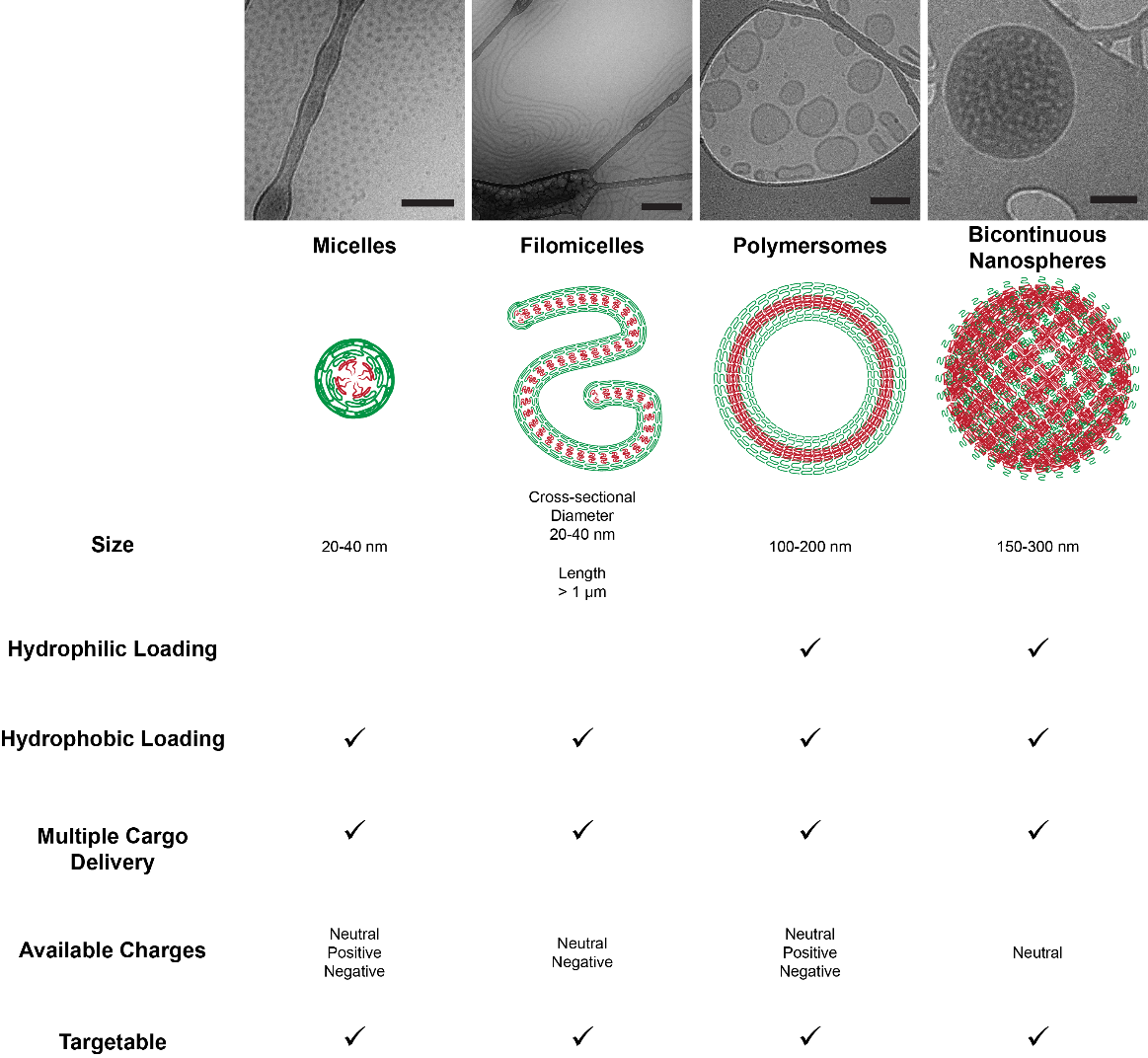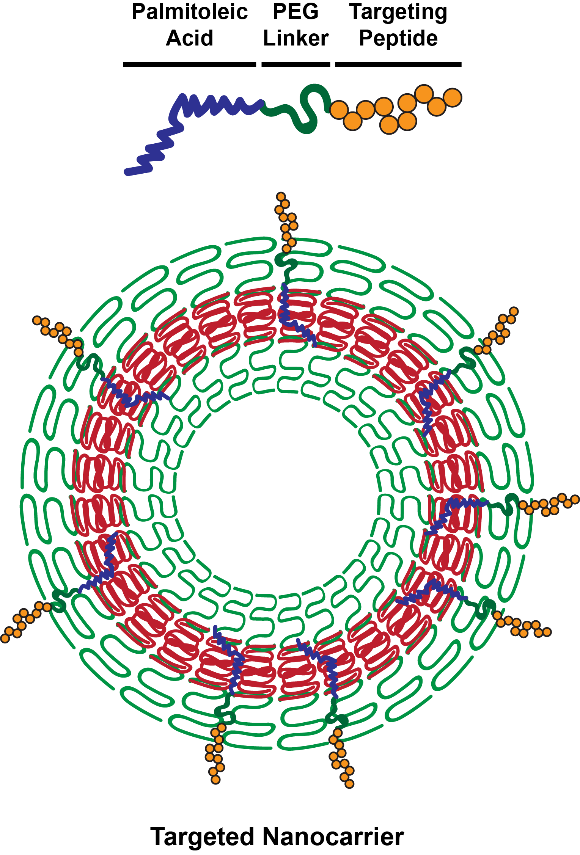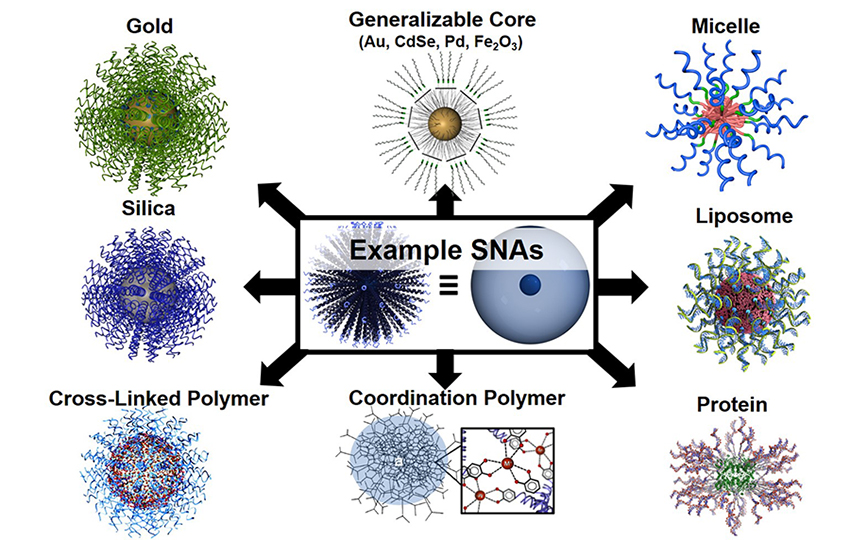Nanostructure-Enhanced Precision Targeting of Therapeutic Payloads
The next frontier in therapeutics development is the precise targeting of biologics and/or small molecule therapeutics to discrete cell populations within relevant organs. This will minimize undesirable side effects, decrease the therapeutic dosage and allow patient-specific tailoring of treatment regimen for precision medicine applications.
Chemistry of Life Processes (CLP) Institute
Identification and selection of targeting receptors and homing moieties
- Services provided for identifying molecular targets to home therapeutic molecules to specific sub-regions and cells within the kidney.
Synthesis and loading of nanocarriers with therapeutics
- Engineering nanoarchitecture has resulted in numerous advancements in targeted drug delivery. Employing nanocarriers as vehicles to transport therapeutics provides increased circulation time, enhanced intracellular delivery and simultaneous loading of multiple molecules that differ in water solubility (Allen, Liu et al. 2016, Yi, Allen et al. 2016, Scott, Karabin et al. 2017, Karabin, Allen et al. 2018).
- Services provided for the scalable fabrication and therapeutic loading of synthetic nanocarriers. These nanocarriers are non-inflammatory and essentially function as “blank slates” with a therapeutic and immunostimulatory potential based solely upon their selected molecular payloads (Scott, Stano et al. 2012, Dowling, Scott et al. 2017, Bobbala, Allen et al. 2018).
- Examples of diverse nanocarriers for controlled drug delivery:

Synthesis and coupling of targeting moieties to nanocarriers
- Recombinant targeting moieties can be synthesized according to specifications
- Peptide Synthesis Core

Synthesis of targeting nanocarriers with spherical nucleic acids (SNA)
- We offer a novel technology for fabricating targeted nanocarriers based on
SNA, a nucleic acid alternative to traditional targeting vehicles that typically rely upon protein-
protein interactions. - The advantages of SNAs compared to free nucleic acid are:
- Higher binding affinity/functionality of up to two orders of magnitude;
- Enhanced protection of nucleic acid from degradation
- High cellular uptake for enhanced transfection
- Minimal to no immunogenicity.

The panel above illustrates the variety of SNA formulations that are available through the International Institute for Nanotechnology (IIN). SNAs are comprised of radially pointing nucleic acids (oligodeoxynucleotides, ODNs) that are clustered around cores made from a variety of chemical and/or biological components. Traditional SNAs have used a gold (Au) templated formulation, but small unilamellar liposomes measuring ~50 nm in diameter allow for a different spectrum of biocompatibility and packaging options by permitting additional molecular agents to be encapsulated within the liposome core.
In vitro and in vivo targeting fidelity
- The imaging resources within the NU Chemistry of Life Processes (CLP) Institute will provide validation of in vivo targeting of therapeutic agents to sub-regions within the targeted organ, such as the kidney.
- Chemistry of Life Processes Institute (CLP)
